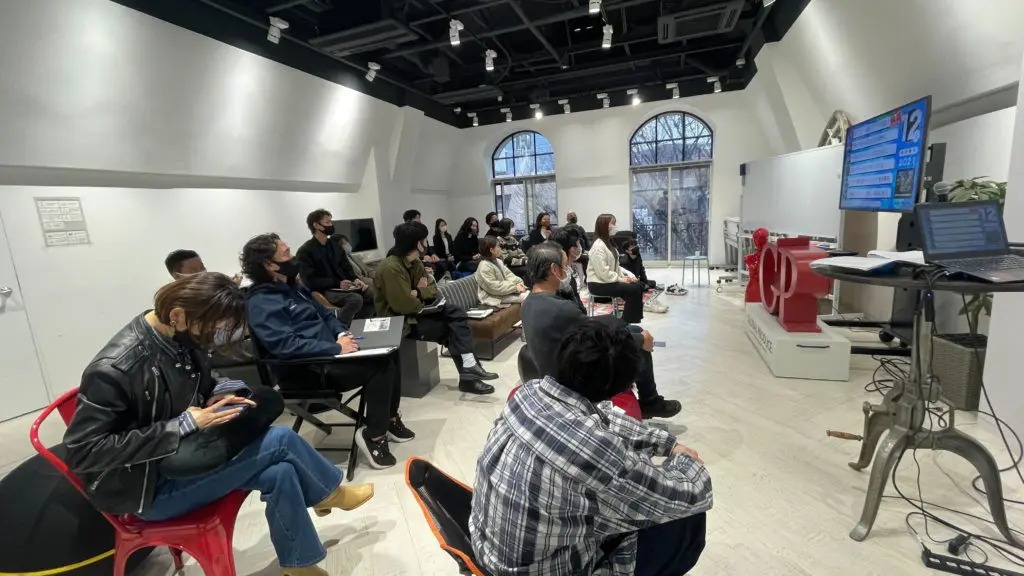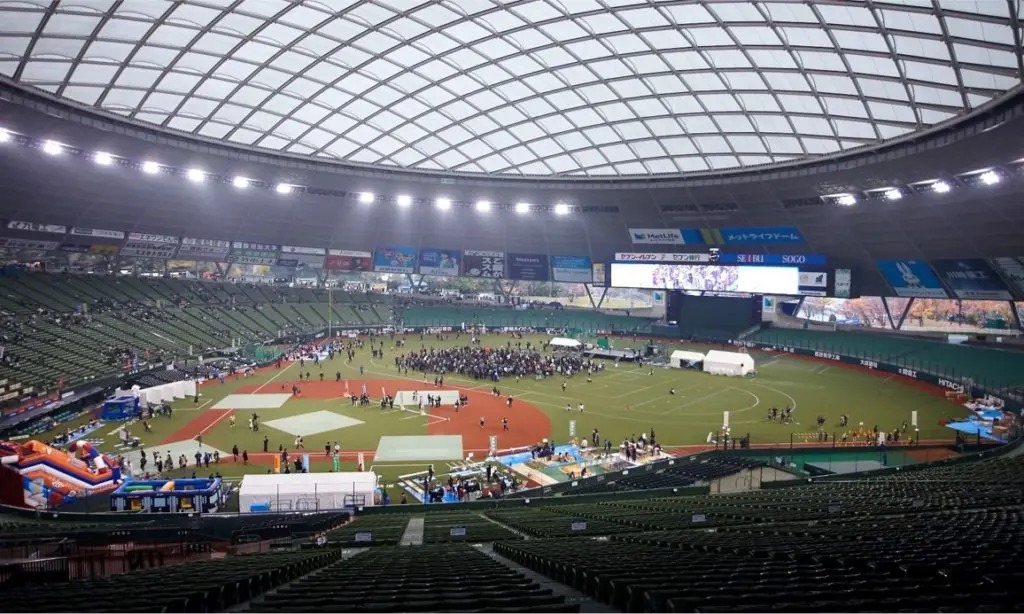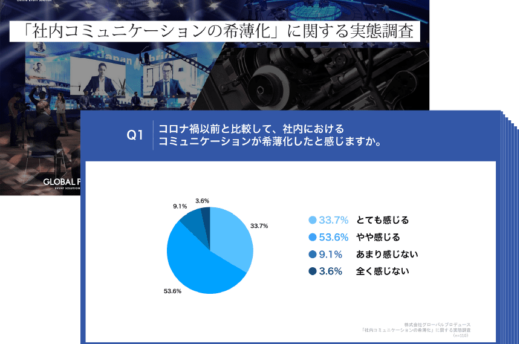Case studies of events to stimulate internal communication
2022.12.02
In-house communication has been attracting a great deal of attention for the past several years. The norm in teleworking and telecommuting working created by the Corona disaster have further accelerated this change. It is a great opportunity to reevaluate internal communication within your company and take a proactive approach.
So what exactly is internal communication? What are the arising problems and what can be done to improve them?
In this issue, we will discuss internal communication and case studies of events designed to stimulate internal communication.

What do we mean by internal communication?
What do you imagine when you hear the term “internal communication“? The exchange of opinions between superiors and subordinates? Information sharing among colleagues? Chatting in the smoking area or break area? Or an internal event?
When talking about internal communication, it is important to first clarify what exactly the term means.
In this article, “internal communication” is positioned as “a generic term for all conversations, information sharing, and information exchange within a company“. Instructions from superiors to subordinates, small talk during breaks, information sharing, meetings, presentations from the president to employees, and company events are all included in the scope of internal communication.
Internal communication itself is not something special, and many of them are done unconsciously. That is why it has been greatly affected by drastic changes in the working environment, such as working remotely.
Issues in Internal Communication
There are two types of social backgrounds to the current problem of insufficient internal communication: “a background specific to Japanese companies” and “rapid changes in the Corona Pandemic”. Let us consider the background, the current problems, and the benefits of solving them.

How are Japanese companies improving internal communication?
In fact, it is said that Japan lags behind other countries in its efforts to improve internal communication. One of the reasons for this is Japan’s unique “lifetime employment” system. Under this system, employees are expected to work for the company for decades, so there has been no need to work on internal communication to prevent employee turnover.
Therefore, both companies and employees have been passive and reluctant to engage in internal communication.
Today, however, the lifetime employment system itself has been shaken in Japan and employment mobility has increased. Employees now have the freedom to “choose their company”, and the common practice of spending decades on internal communication has been turned upside down.
As a result, companies that neglect internal communication are experiencing lower employee retention rates.
Rapid changes in working environments during the coronavirus disaster
In addition, the new coronavirus infection caused a lack of internal communication.
Before the pandemic, very few companies in Japan had introduced telework. Many companies were not even thinking about adopting it. As a result, telework began without sufficient preparation on the part of both companies and employees, further diluting internal communication, with no planned structure. Since changes in work environments such as telework are expected to continue even after the pandemic, it is necessary for companies to implement measures to improve internal communication as soon as possible.
Issues Caused by Diluted Internal Communication
What kind of problems occur when internal communication is weakened? The following are considered to be particularly problematic.
> Inability to share information
> Failure to foster a spirit of loyalty and a sense of belonging to the company
> Failure to unify employees
Inability to share information
When internal communication is weak, the number of times information is shared and provided within the company will inevitably decrease. As a result, what needs to be communicated is not conveyed, and this has a significant impact on business operations.
Failure to foster a spirit of loyalty and a sense of belonging to the company
Company loyalty and a sense of belonging within employees are essential for a company to grow and are one of the key motivators for the working force. When internal communication is weak, the company’s presence becomes small among employees, leading to a decline in motivation and employee turnover.
Failure to unify employees
One of the roles of internal communication is to ensure that employees understand the management policies and strategies and are united toward the mutual goal. If internal communication is weak, this point will not be thoroughly understood, employees will be aiming in various directions, and the company will not be able to grow strategically.

Benefits of Revitalizing Internal Communication
As we can see, the impact of diluted internal communication on a company can be quite significant. Conversely, there are many advantages to revitalizing internal communication.
> Increased productivity
> Fostering innovation
> Company Branding
Increased Productivity
When internal communication is activated, information is shared appropriately and employees are more informed, motivated and have a clear understanding of their job scope, resulting in increased company productivity.
Fostering innovation
Activating internal communication creates an environment where a variety of ideas can be generated. As a result, new ideas are more likely to emerge and lead to drastic innovation.
Company Branding
Activation of internal communication strengthens employees’ sense of loyalty and belonging, and generates a positive desire to contribute to the company. A better working environment for employees, increased productivity, and innovation will become the backbone of your company brand.
Events as a Means of Activating Internal Communication
So how can we activate internal communication? There are an infinite number of ways, but the role can be divided into two main categories.
> Redesigning communication
> Creating triggers
“Redesigning communication” would include the use of internal SNS, web conferencing, publishing internal newsletters, distributing messages using video, etc. The aim is to consciously create a system and platforms to increase in-house communication, which used to be done naturally and daily by just coming to work and seeing each other. Now that the conventional wisdom of “meeting face-to-face” has changed due to teleworking, etc., it is essential to create a physical or digital environment for daily communication.
“Creating triggers” is to encourage employees to communicate with each other through internal events. If each and every employee does not take an active role in internal communication, no matter how many platforms and systems are put in place, they will be a waste of resources. By motivating employees through internal events, etc., and making them aware of the importance of communication and having fun, employees will make positive use of the system, which will lead to the revitalization of daily internal communication.
It can be said that “Redesigning communication” and “Creating triggers” are two wheels of a cart, and are both essential to increase internal communications.

Examples of Events to Revitalize Internal Communication
So, what kind of events are available to stimulate internal communication?
Here are some examples from events we have handled!
A large sports festival (live event) in a dome venue with 5,000 participants
In response to the request for a festival-like event that could be enjoyed by all family members of employees, we designed a program that included an all-participant game in which everyone could participate at the same time, as well as an exciting relay race. In addition, we designed a space where all participants could enjoy festival contents while others compete in sport matches.

Annual Year-End Party Event (live event)
We set up a stage with a total of more than 10,000 photos filled with employees’ memories of the past 20 years at both ends of the stage. We set up the stage in such a way that participating employees could look back on the past by looking at the photos and naturally start a conversation. The program was also designed to involve participants with plenty of participatory content.

Year-end general meeting event (Hybrid)
The main content employed was a quiz-style, fun look back at the year. Taking advantage of the fact that this was a hybrid event, we not only designed the space and streaming event so that the audience could enjoy watching the event while drinking and laughing like on TV, but we also managed the quiz tally and ZOOM in real-time to allow the audience to actively participate in the event.
We also had dozens of people come to the venue to enjoy arm-wrestling and relay races and other content unique to live venue participation.

Survey on the Dilution of Internal Communication
To answer the questions such as,
“I have a feeling that the Corona disaster is diluting internal communication, but do you have any data on this?”
“Do internal events really have the effect of revitalizing internal communication?”,
we have conducted our own “Survey on the Dilution of Internal Communication” and disclosed the results.
The survey asked employees in their 20s and 30s who telework three or more times a week whether the Corona disaster has diluted internal communication, the problems caused by diluted internal communication, and the effects of internal events as a means of revitalizing internal communication, among other questions.

If you’d like to check the survey results, please jump from the link below. (In Japanese)
Summary: Key Points for Revitalizing Internal Communication Learned from Case Studies
In order to solve the issues regarding internal communication caused by the reform of work styles and the Corona pandemic, two axes are indispensable: preparation of environment through internal SNS and communication platforms, and internal events as triggers to motivate employees to communicate within the company. With the changes in our working environment following the change of lifetime employment in Japan and the Corona disaster worldwide, it will become more and more essential to activate and increase internal communication for any company to flourish.
Please contact us if you’re looking into holding internal events to improve the amount and quality of in-house communication.
